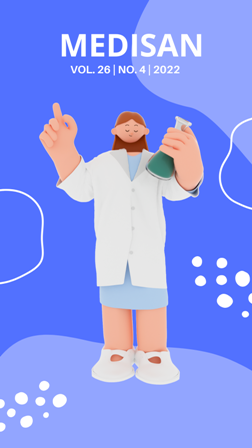Effectiveness of cryotherapy and nervous transcutaneous electro stimulation in sportsmen with affections of the osteomyoarticular system
Keywords:
cryotherapy, traumatisms in athletes, injure, rehabilitation services, effectiveness of treatment.Abstract
Introduction: The serious trauma constitutes one of the main causes of death and disability. Although it is a very heterogeneous disease as for its origin, types of injure and seriousness, great uncertainty exists as for its prognosis.
Objective: To evaluate the effectiveness of cryotherapy and the nervous transcutaneous electroestimulation for the decrease of pain and edema in sportsmen with affections of the osteomyoarticular system.
Methods: An observational, descriptive and retrospective study of 5548 sportsmen with affections of the osteomyoarticular system was carried out, they went to the Physical Rehabilitation Service of the José Antonio Huelga Stadium in Sancti Spíritus, between November, 2018 and December, 2019, to receive cryotherapy and nervous transcutaneous electroestimulation for the decrease of edema and pain. Among the studied variables figured: sex, age, type of sport that they practiced, injure that presented recovery and time of disappearance of symptoms.
Results: There was a prevalence of the male sex (66.83 %), the 18-21 age group (57.33 %), football and athletics as sports with a higher number of affected patients (23.08 and 22.85 %, respectively), as well as sprains (56.54 %) and fractures (20.81%) as main lesions.
Conclusions: The applied therapy was effective and safe to diminish the edema and pain in sportsmen due to traumatic diseaes of the osteomyoarticular system.
Downloads
References
2. Cárdenas D, Conde González J, Perales JC. La fatiga como estado motivacional subjetivo. Rev Andal Med Deporte. 2017 [citado 01/06/2022];10(1):31-41. Disponible en: https://scielo.isciii.es/scielo.php?script=sci_arttext&pid=S1888-75462017000100031&lng=es&nrm=iso&tlng=es
3. García Quirós DA, Cyrus Barker E, Roselló Araya M. Beneficios del abordaje fisioterapéutico en la recuperación del dolor muscular de aparición tardía y su influencia en el rendimiento deportivo. Rev Ter. 2021 [citado 01/06/2022];15(1):36-53. Disponible en: https://revistaterapeutica.net/index.php/RT/article/view/122
4. Vallejo Castillo LF, Sandoval Cuellar C, Quino Ávila AC. Uso de la crioterapia en la fatiga muscular post esfuerzo en individuos que realizan práctica deportiva: Revisión Sistemática. Rev Invest Salud Univ Boyacá. 2019 [citado 01/06/2022];6(2): 71-98. Disponible en: https://revistasdigitales.uniboyaca.edu.co/index.php/rs/article/view/416/497
5. Martínez Estupiñán LM, Martínez Aparicio L, Martínez Aparicio L. Lesiones deportivas en el niño atleta. Valoraciones sobre antecedentes y prevención (I). Rev. cuban. med. deporte y cultura física. 2019 [citado 01/06/2022];14(1). Disponible en: http://www.revmedep.sld.cu/index.php/medep/article/view/25/10
6. Ortiz Mateo AC. Tratamiento fisioterapéutico en lesión grado II del LCA [Trabajo para alcanzar el título de Licenciado en Terapia Física y Rehabilitación]. Lima: Universidad Inca Garcilaso de la Vega; 2021 [citado 01/06/2022]. Disponible en: http://repositorio.uigv.edu.pe/handle/20.500.11818/5960
7. Llorca Rubio C, Herrera La O L, Martén Kindelán E, Ramos O’Farrill L. Protocolo fisioprofiláctico de la lucha olímpica. Rev. cuban. med. deporte y cultura física. 2018 [citado 10/06/2022];13(2). Disponible en: http://www.revmedep.sld.cu/index.php/medep/article/view/70
8. Barceló Reyna R. Estudio de las lesiones deportivas en atletas de alto rendimiento de la provincia Las Tunas en el año 2012. EFDeportes.com (Revista Digital. Buenos Aires. 2014 [citado 01/05/2022];19(193). Disponible en: https://efdeportes.com/efd193/lesiones-deportivas-en-alto-rendimiento.htm
9. Sarmiento Carrión JP. Investigación bibliográfica de los efectos de la técnica de restricción de flujo sanguíneo como método de rehabilitación en lesiones de miembro inferior [trabajo para optar por el título de Licenciada en Terapia Física]. Quito: Universidad Central de Ecuador; 2021 [citado 01/06/2022]. Disponible en: http://www.dspace.uce.edu.ec/handle/25000/23760
10. Martínez Estupiñan LM. Sistema de acciones para la prevención de lesiones deportivas del SOMA en el niño atleta [Tesis doctoral]. Villa Clara: Universidad Medica de Villa Clara; 2018 [citado 01/05/2022]. Disponible en: http://www.eduniv.cu/items/show/39186
11. García Chamizo E, Peláez Sordo C, Pérez Pena J. Eficacia de la electroanalgesia con crioterapia en la sacro lumbalgia. Rev. cuban. med. deporte y cultura física; 2012 [citado 01/06/2022];7(1). Disponible en: http://www.revmedep.sld.cu/index.php/medep/article/view/242
12. Lohrer H, Malliaropoulos N, Korakakis V, Padhiar N. Exercise-induced leg pain in athletes: diagnostic, assessment, and management strategies. Phys Sportsmed. 2018 [citado 01/06/2022];47(1):47-5.Disponible en: https://pubmed.ncbi.nlm.nih.gov/30345867/
13. Uberuaga Ramírez M, Espinoza Salinas A, Mahecha Matsudo S. Prevalencia, características y factores asociados a lesiones del entrenamiento funcional en intervalos de alta intensidad en Santiago de Chile. J Sport Health Res. 2021 [citado 01/06/2022.;13(Supl 1):65-74. Disponible en: https://recyt.fecyt.es/index.php/JSHR/article/view/91705
14. Olmos Torres EP. Crioterapia. Dos modalidades terapéuticas para la rehabilitación del linfedema. Rev Venezolana Oncol. 2020 [citado 01/06/2022];32(4):216-23. Disponible en: https://www.redalyc.org/journal/3756/375663351003/
15. Zambrano Zambrano FC, Cedeño Flores FP, Zambrano Chicaiza DJ, Plaza López JJ. Beneficios de la crisoterapia a los pacientes con diagnóstico de artritis reumatoide. RECIMUNDO.2021 [citado 30/03/2022];5(1):298-04. Disponible en: https://recimundo.com/index.php/es/article/view/1008
Published
How to Cite
Issue
Section
License
All the articles can be downloaded or read for free. The journal does not charge any amount of money to the authors for the reception, edition or the publication of the articles, making the whole process completely free. Medisan has no embargo period and it is published under the license of Creative Commons, International Non Commercial Recognition 4.0, which authorizes the copy, reproduction and the total or partial distribution of the articles in any format or platform, with the conditions of citing the source of information and not to be used for profitable purposes.





